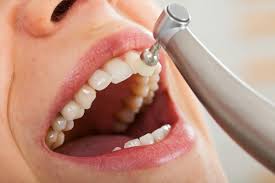At the Tracey Bell Clinic, we frequently see patients concerned about the health of their gums. One common issue is gingivitis, a mild form of gum disease that can lead to more serious dental problems if not addressed. Understanding the causes, preventive measures, and how gingivitis is reversible is essential to maintaining good oral health. In this post, I’ll explain what gingivitis is, what causes it, how you can prevent it, and why early intervention is so important.
What is Gingivitis?
Gingivitis is the initial stage of gum disease, and it’s caused by the accumulation of plaque—a sticky, colorless film of bacteria that forms on your teeth. Plaque irritates the gums, making them red, swollen, and prone to bleeding, particularly when brushing or flossing. While gingivitis is a common issue, it is also a reversible condition when caught early.
If left untreated, gingivitis can develop into periodontitis, a more severe form of gum disease that can cause tooth loss. The good news is that gingivitis is both preventable and treatable with proper oral care.
Causes of Gingivitis
The primary cause of gingivitis is poor oral hygiene. When you fail to brush and floss your teeth properly, plaque forms on your teeth and gums. This plaque harbors bacteria that irritate the gums, leading to inflammation. Other risk factors that contribute to gingivitis include:
Inadequate Oral Care: Insufficient brushing and flossing allows plaque to build up along the gum line.
Smoking and Tobacco Use: Tobacco products can reduce the blood flow to your gums, making them more susceptible to infection.
Poor Nutrition: A diet low in essential nutrients, particularly vitamin C, can impair gum health and reduce the body’s ability to fight off infections.
Medical Conditions: Conditions like diabetes, certain viral infections, and immune system disorders can increase the risk of gingivitis.
Hormonal Changes: Pregnancy, menstruation, and menopause can all cause hormonal fluctuations that make gums more sensitive and prone to inflammation.
Medications: Some medications, such as those that reduce saliva flow, can increase the likelihood of developing gingivitis.
Age: Older adults are more likely to experience gum problems due to cumulative plaque buildup over time.
Genetics: Some individuals are more genetically predisposed to gum disease, even with regular oral hygiene practices.
How to Prevent Gingivitis
Fortunately, gingivitis is highly preventable with simple yet effective oral hygiene practices. Here are some steps you can take to reduce your risk of developing gingivitis:
Brush Your Teeth Properly: Brush your teeth at least twice a day using fluoride toothpaste. Ensure you’re brushing all tooth surfaces, including the gum line, for at least two minutes each time. Use a soft-bristled toothbrush to avoid damaging your gums.
Floss Daily: Flossing is crucial to remove plaque and food particles from between your teeth and under the gum line—areas that your toothbrush can’t reach.
Use an Antibacterial Mouthwash: Mouthwashes that kill bacteria help reduce plaque buildup and can help prevent gum inflammation. Make sure to use a mouthwash that’s alcohol-free to avoid drying out your gums.
Visit Your Dentist Regularly: Regular dental checkups and professional cleanings (at least every six months) are essential. Your dentist can remove tartar, which is hardened plaque that brushing alone cannot eliminate.
Eat a Healthy Diet: A balanced diet rich in vitamins and minerals, particularly vitamin C, is vital for gum health. Foods like fruits, vegetables, and lean proteins help boost your immune system and support healthy gums.
Quit Smoking or Using Tobacco: Smoking not only harms your gums but also reduces the effectiveness of your body’s immune response, making it harder for your gums to heal from infection.
Stay Hydrated: Drinking plenty of water ensures that your mouth stays moist, helping to wash away food particles and bacteria that could lead to gingivitis.
Is Gingivitis Reversible?
Yes, one of the most encouraging aspects of gingivitis is that it is fully reversible with the right care. If you notice symptoms such as swollen, red, or bleeding gums, it’s important to address the issue quickly before it progresses into more serious gum disease. Here’s how gingivitis can be reversed:
Professional Cleaning: The first step in reversing gingivitis is a thorough professional cleaning by a dentist or dental hygienist. This cleaning removes plaque and tartar buildup that your toothbrush can’t remove. Once this is done, your gums have a chance to heal and return to a healthier state.
Improved Oral Hygiene: By adopting better oral hygiene habits at home, you can stop plaque from accumulating and give your gums a chance to recover. This means brushing and flossing regularly and using mouthwash.
Anti-Inflammatory Treatment: In some cases, your dentist may recommend the use of an antimicrobial mouth rinse or topical treatments to reduce inflammation and fight bacteria in the gums.
Regular Follow-Up: After the initial treatment, your dentist may recommend regular checkups to ensure your gums are healing properly and to monitor for any signs of recurring gingivitis.
Why Early Detection is Key
The key to managing gingivitis is early detection. If you notice symptoms such as bleeding gums while brushing or flossing, or if your gums feel swollen or tender, it’s crucial to seek dental care. Addressing gingivitis at this early stage can prevent it from progressing to periodontitis, which can lead to tooth loss and require more complex treatment, such as gum surgery.
In conclusion, gingivitis is a common yet preventable condition that can be reversed with the right care. At the Tracey Bell Clinic, we are committed to helping our patients maintain healthy gums and teeth. If you’re experiencing symptoms of gingivitis or want to discuss your oral care routine, don’t hesitate to contact us. We’re here to help you achieve a healthier, more confident smile.
Take control of your gum health today, and remember—gingivitis is reversible with the right steps
